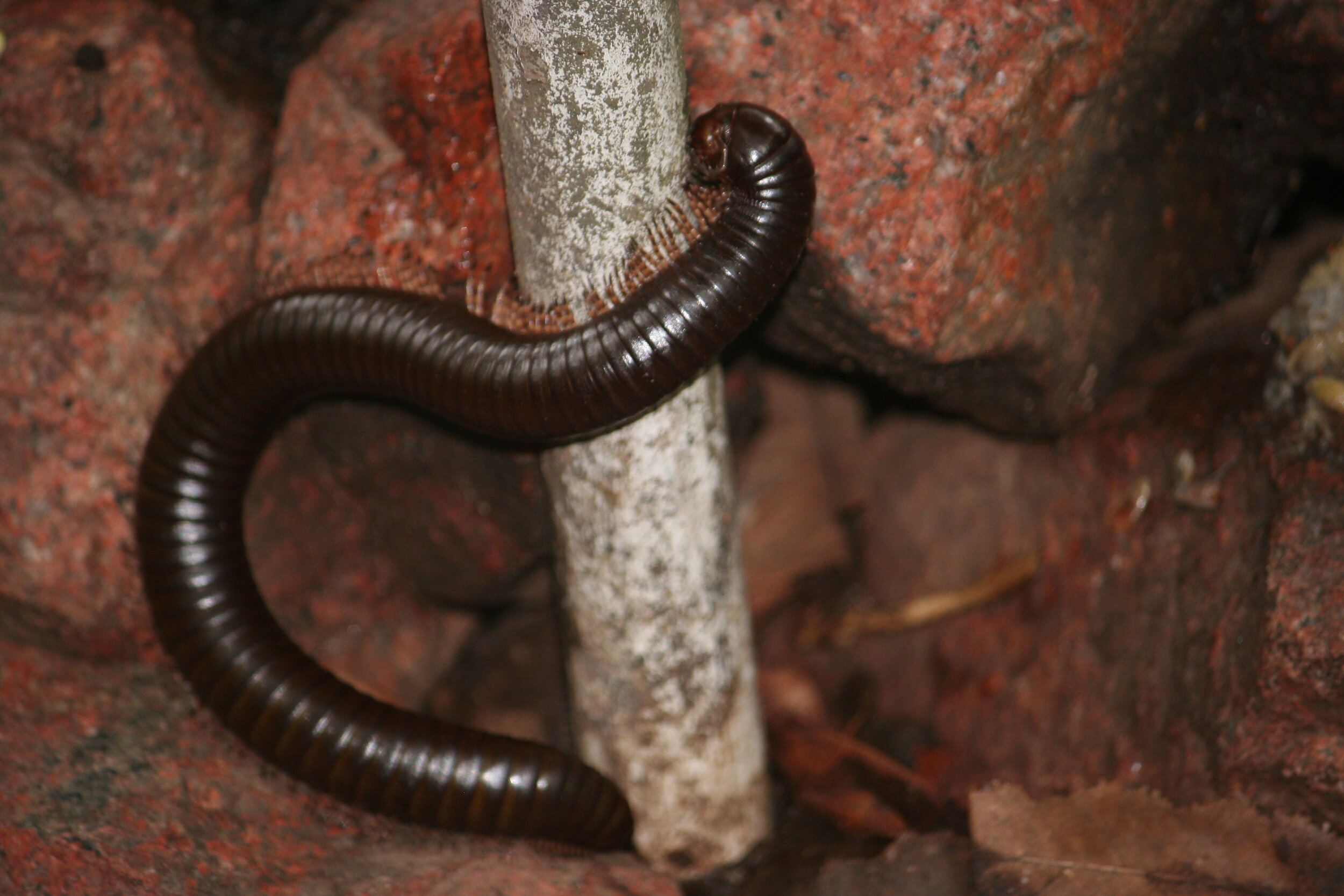Seychelles Giant Millipede (Sechelleptus seychellarum)
The Seychelles giant millipede, once widespread across the granitic islands, now finds refuge on predator-free islands like Cousine. With two pairs of legs per body segment, it moves slowly and poses no threat unlike its faster, predatory cousin, the centipede. Instead, it relies on a chemical defense to deter predators.
The species has been listed as Endangered on the IUCN Red List. The species inhabits 14 islands within the Seychelles, with an extent of occurrence of 600 km2 (230 sq mi), and occupancy area of 37 km2 (14 sq mi).
Despite their small size, these millipedes play a crucial role on Cousine Island. They serve as a vital food source for various local animals and significantly contribute to ecosystem health by breaking down plant litter through their feeding habits. This decomposition process is essential for nutrient cycling and soil fertility, benefiting all plant and animal species on the island.
Invertebrates like the Seychelles giant millipede often go unnoticed, yet they are pivotal for maintaining ecological balance. Their presence underscores the intricate web of life, where every organism, no matter how small, plays a critical role in conservation efforts. Observing these creatures reminds us of their immense significance in sustaining biodiversity and ecosystem services. Next time you encounter a Seychelles giant millipede, appreciate its humble yet profound impact on Cousine Island's delicate ecosystem.


